Record aircraft orders do not necessarily indicate good times ahead, writes Chris Tarry of CTAIRA, with analyses from Fabrice Tacoun
With the full figures now known, there can be no doubt the number of orders won by Airbus and Boeing in 2005 surpassed expectations. The total – 2,057 net orders – was the highest on record. But, as ever, order volumes alone do not necessarily say too much about the performance and outlook for the airline business.

This column examined in April 2005 the “order now or fail to get a delivery for a number of years” mentality that appeared widespread. One consequence of the record order intake is that there are few, if any, near-term delivery slots. They will only appear if a carrier defers orders or the manufacturers take a more aggressive private line on just which aircraft in the orderbook are delivered.
An airline or lessor needs to be certain that the market in three or four years will enable them to profitably use or lease the aircraft – the risk is clearly that circumstances change and that there is a marked and negative divergence from current economic and industry circumstances. Inevitably, there are those who believe current economic forecasts suggest a relatively benign economic environment will prevail. Furthermore, most long-term economic forecasts indicate growth in real terms at a more or less steady state rate of 3-3.2% a year.
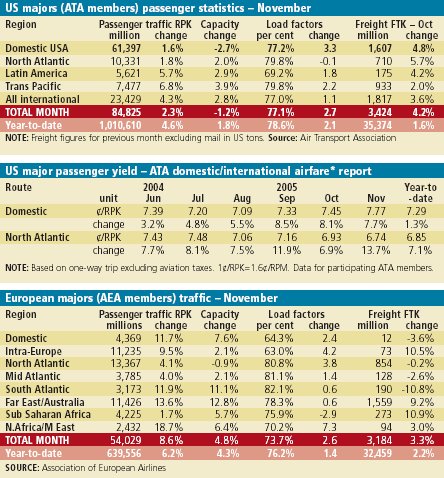
But life is not quite like that. There would appear to be some major economic risks: the US consumer is by no means sure to go on spending; uncertainty in the Middle East could result in higher oil prices and this, with the lagged effect of earlier rises, could feed through into inflation and slower economic growth this year.
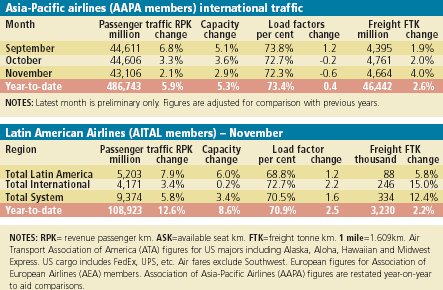
As a consequence, not only is a lower level of ordering inevitable, but there is the prospect of a real hiatus. Deliveries in the 150-seat segment are accelerating and are expected to reach their maximum rate in 2007. A further increase seems hard for the manufacturers to justify. Having reached the maximum rate, the focus will be on how long these rates will be sustained. This depends upon the rate of new orders and the continuing ability of customers to take aircraft already on order.
An examination of the order intake for the Airbus A320 and the Boeing 737 from 2001 shows a remarkable similarity in at least one respect – the share in total orders for both of these aircraft families (Airbus 43%, Boeing 45%) that have been placed by low-cost or low-frills airlines. One risk is the extent to which this segment may now be “ordered out”, while another relates to delivery risk, where aircraft have been ordered by new entrants that either fail or where performance falls short of expectations rendering part or all of the aircraft order redundant.
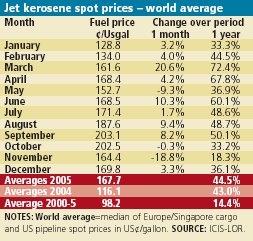 There is likely to be little comfort from the USA. Recently Airbus suggested that US “legacy airlines” would begin to order aircraft again in 2007 – probably more in hope than expectation. There is undoubtedly a replacement need in the USA, but it will be much slower to materialise. While much of the US industry continues its painful move to profitability, it appears that the US economy has peaked and that the revenue background will get more difficult.
There is likely to be little comfort from the USA. Recently Airbus suggested that US “legacy airlines” would begin to order aircraft again in 2007 – probably more in hope than expectation. There is undoubtedly a replacement need in the USA, but it will be much slower to materialise. While much of the US industry continues its painful move to profitability, it appears that the US economy has peaked and that the revenue background will get more difficult.
Several observers suggest the high fuel price will act as a catalyst for new aircraft to replace older, less fuel-efficient models. But the data suggests there is little or no relationship between changes in the fuel price and ordering. There are significant costs associated with fleet change, combined with higher ownership costs, which have a significant bearing on order decisions.
As for the timing of deliveries, peak delivery rates in the past have tended to coincide with an economic downturn and/or a trough in the operating performance of the industry. The floor levels of both orders and deliveries in the 150-seat segment in the last downturn were higher than in the past – but nonetheless the variation between peak and trough was and will still be marked. Against this background what does the future hold? While IATA anticipates a return to profitability for the industry in 2007, this is likely to be short-lived and profits may well peak in 2008 before heading down again.
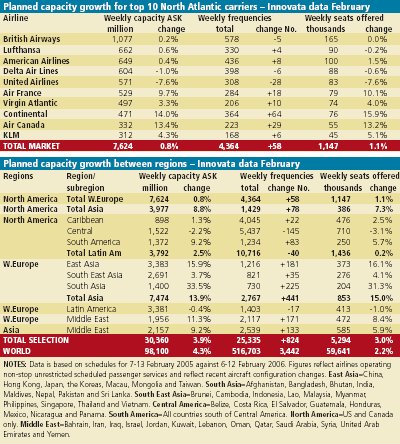
As a result the peak delivery period would appear to be relatively short. This is an industry where rational economic behaviour only appears to emerge after periods of intense financial pain and tends to be short in duration.
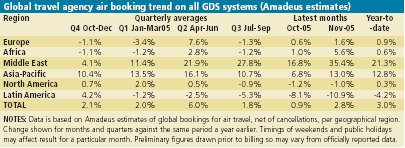
There are good reasons to believe that rather than being the start of a golden age for the industry, this is in fact a precursor to more difficult and dangerous times. There is nothing wrong with ordering aircraft as long as the seller and buyer can benefit from the transaction – but this has yet to be proven. ■
Source: Airline Business



















